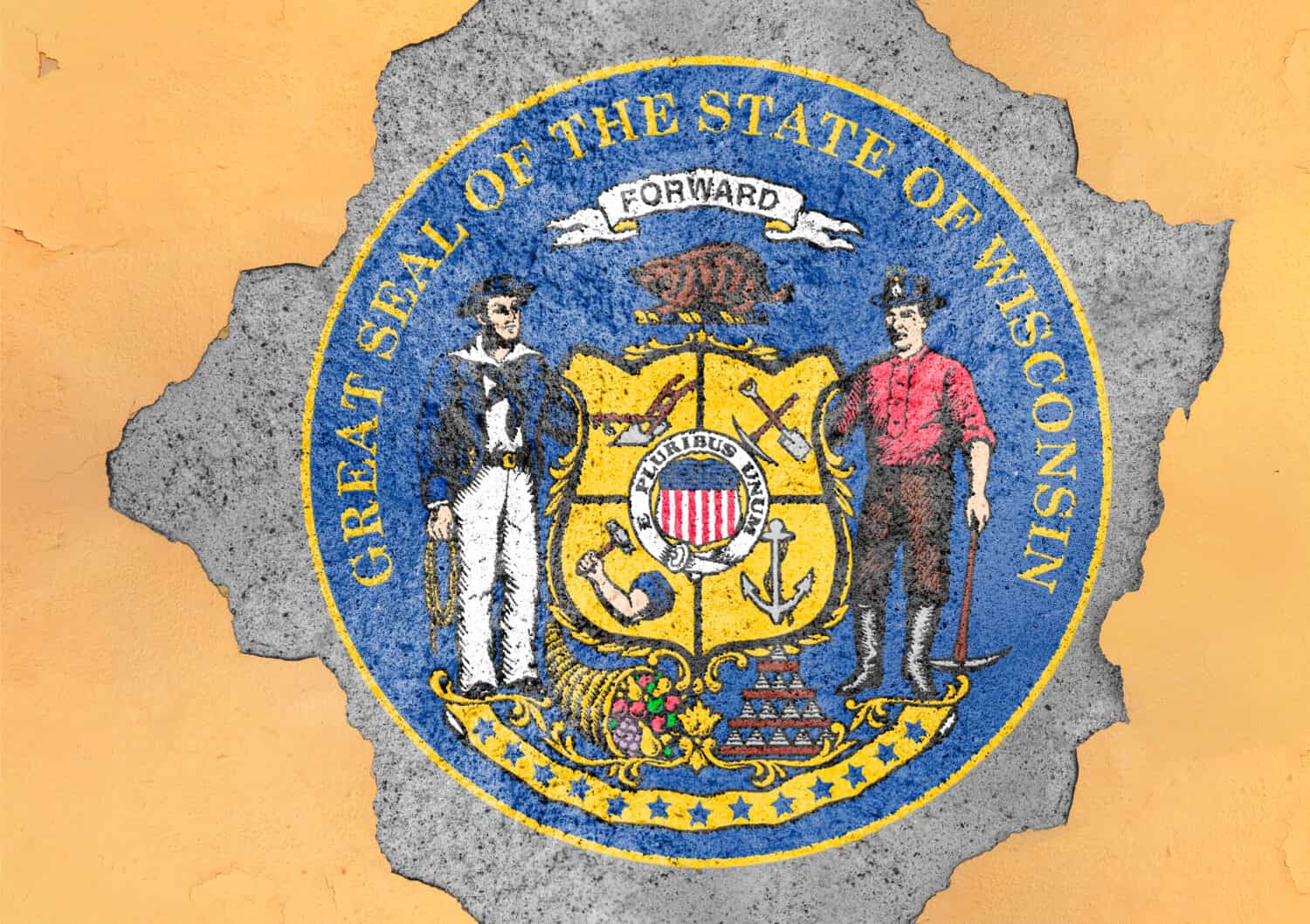As a part of the upper Midwest, Wisconsin contributes many natural resources and abundant agricultural staples to the United States. When measured by land area, Wisconsin ranks as the 25th largest state. And when looking at the largest population, Wisconsin is the 20th most populated state. Nicknamed the “Badger State” and “Copper State,” many of these aspects went into the design of the Wisconsin state seal. It is rich in history and symbolism, and every image in it represents what Wisconsin is and strives to be.
History of Wisconsin’s State Seal

©The Art of Pics/Shutterstock.com
The Wisconsin territory changed hands between the French and British until 1787. Following the American Revolutionary War, Wisconsin officially became the property of the United States. From there, the Wisconsin Territory went through some growing pains as the country established territory lines. First, the United States recognized Wisconsin as part of the Indiana Territory until 1809. Then it transferred hands to be part of the Illinois Territory until 1818. From there, the Michigan Territory claimed Wisconsin until 1836.
Wisconsin didn’t become an independent territory until 1836, which is also when officials designed the seal. In 1837, territory officials mapped out Madison as the capital, and a year later, the territorial legislature met in Madison.
Finally, President James K. Polk signed the bill designating Wisconsin as a state on May 29, 1848. New statehood meant the officials designed a new Wisconsin state seal that year. But it wasn’t until Chapter 280, Laws of 1881, that the state finalized the design of the Great Seal and coat of arms. That same design is what Wisconsin uses today.
Design of the Seal
The Wisconsin state seal incorporates the state coat of arms. At the top of the seal are the words “Great Seal of the State of Wisconsin” arching at the top. Another aspect of the seal is the 13 stars, which curve below the coat of arms. An ornamental border encircles the entire seal.
The Wisconsin Coat of Arms

©Bennian/Shutterstock.com
The most significant element of the state seal is the coat of arms. At the center of the coat of arms sits a shield which is split into quarters. These quarters bear an image of a plow, a pick and shovel, an arm and hammer, and an anchor. At the center of the large shield rests a smaller shield representing the United States.
Around the United States shield are the words “e pluribus unum,” a Latin phrase meaning “one from many.” The Continental Congress selected this phrase when the 13 colonies were united into a single country. It also appears on the Great Seal of the United States and some of the country’s currency.
The large shield sits on top of a cornucopia and a pyramid of lead. And above the shield is a badger, which is the state animal. Also featured on Wisconsin’s state seal is the state motto, “Forward,” waving on a white banner.
The Great Seal is used to authenticate the governor of Wisconsin’s official acts. It is also on the state flag, symbolizing everything that Wisconsin stands for.
The Symbolism of the Wisconsin State Seal

©iStock.com/Maciej Jaroszewski
Starting at the top of the seal, Wisconsin adopted the motto “Forward” in 1851 because it was simple, powerful, and positive. Underneath, the badger shows Wisconsin’s long mining history. Miners tunneled into hillsides searching for lead ore and often lived in the abandoned mine shafts. People nicknamed them “badgers,” not only because of how they lived in the tunnels but also because they were hardworking and energetic, like badgers. This is essential to the spirit of the Wisconsin state seal.
The sailor and the miner who hold up the central shield denote the two primary industries in Wisconsin at that time: shipping and mining. The images in the four quadrants of the large shield represent agriculture (plow), mining (pick and shovel), manufacturing (arm and hammer), and navigation (anchor). The cornucopia denotes prosperity and abundance for the state, and the pyramid of 13 lead ingots shows the mineral wealth of Wisconsin while simultaneously nodding to the 13 original states.
Finally, the 13 stars curving at the bottom of the Great Seal again acknowledge the important 13 states that started this great nation. All in all, the Wisconsin state seal encompasses many of this state’s values and rich history.
The post Discover the Wisconsin State Seal: History, Symbolism, and Meaning appeared first on AZ Animals.
from Animal News, Facts, Rankings, and More! - AZ Animals https://ift.tt/SrHc8lO